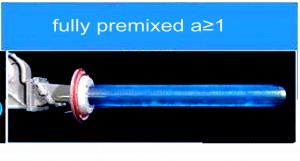- Afrikaans
- Albanian
- Amharic
- Arabic
- Armenian
- Azerbaijani
- Basque
- Belarusian
- Bengali
- Bosnian
- Bulgarian
- Catalan
- Cebuano
- China
- China (Taiwan)
- Corsican
- Croatian
- Czech
- Danish
- Dutch
- English
- Esperanto
- Estonian
- Finnish
- French
- Frisian
- Galician
- Georgian
- German
- Greek
- Gujarati
- Haitian Creole
- hausa
- hawaiian
- Hebrew
- Hindi
- Miao
- Hungarian
- Icelandic
- igbo
- Indonesian
- irish
- Italian
- Japanese
- Javanese
- Kannada
- kazakh
- Khmer
- Rwandese
- Korean
- Kurdish
- Kyrgyz
- Lao
- Latin
- Latvian
- Lithuanian
- Luxembourgish
- Macedonian
- Malgashi
- Malay
- Malayalam
- Maltese
- Maori
- Marathi
- Mongolian
- Myanmar
- Nepali
- Norwegian
- Norwegian
- Occitan
- Pashto
- Persian
- Polish
- Portuguese
- Punjabi
- Romanian
- Russian
- Samoan
- Scottish Gaelic
- Serbian
- Sesotho
- Shona
- Sindhi
- Sinhala
- Slovak
- Slovenian
- Somali
- Spanish
- Sundanese
- Swahili
- Swedish
- Tagalog
- Tajik
- Tamil
- Tatar
- Telugu
- Thai
- Turkish
- Turkmen
- Ukrainian
- Urdu
- Uighur
- Uzbek
- Vietnamese
- Welsh
- Bantu
- Yiddish
- Yoruba
- Zulu
Nov . 08, 2024 01:23 Back to list
Comparison of Cross and Counter Flow Heat Exchangers for Enhanced Thermal Efficiency
Cross Counterflow Heat Exchangers An Overview
In the world of thermal engineering, heat exchangers play a critical role in transferring heat between two or more fluids without mixing them. Among the various types of heat exchangers, the cross counterflow heat exchanger distinguishes itself through its unique flow arrangement and efficiency. This article aims to explore the principles, applications, and advantages of cross counterflow heat exchangers.
Principles of Operation
A cross counterflow heat exchanger comprises two fluids flowing in opposite directions. This configuration allows for a higher temperature gradient between the two fluids, maximizing heat transfer efficiency. In essence, as the hot fluid moves in one direction, it encounters the cold fluid flowing in the opposite direction. As a result, the heat transfer area is utilized more effectively when compared to parallel flow or counterflow designs.
The effectiveness of a cross counterflow heat exchanger can be analyzed using the effectiveness-NTU method, which examines the number of transfer units (NTU) and the capacity rate of the fluids involved. The design of these heat exchangers helps achieve a near-maximum heat recovery potential, which is crucial in various industrial applications.
Applications
Cross counterflow heat exchangers are employed in a diverse array of industries, ranging from chemical processing to HVAC systems. Some common applications include
1. Industrial Processes In industries such as petrochemicals and food processing, cross counterflow heat exchangers are used to recover heat from exhaust gases to preheat incoming fluids, thereby improving energy efficiency.
2. HVAC Systems In heating, ventilation, and air conditioning (HVAC) systems, these heat exchangers help in recovering heat from exhaust air and transferring it to fresh incoming air, significantly reducing energy consumption.
4. Automotive In vehicle cooling systems, they are employed to optimize engine temperature management and improve overall efficiency.
cross counter flow heat exchanger

5. Renewable Energy Systems Cross counterflow heat exchangers are also utilized in solar thermal systems, where they help transfer heat from solar collectors to storage tanks effectively.
Advantages
The inherent design of cross counterflow heat exchangers provides several advantages, contributing to their popularity in various applications
1. High Thermal Efficiency Due to the opposite flow arrangement, the heat transfer rate is maximized, resulting in superior thermal performance compared to other configurations.
2. Compact Design Cross counterflow heat exchangers can be designed to occupy less space while offering high heat transfer rates. This characteristic is particularly advantageous in applications where space is at a premium.
3. Versatile Applications Given their high efficiency, they can be adapted to a range of process requirements, making them suitable for various industrial sectors.
4. Reduced Energy Costs By enhancing heat recovery, these heat exchangers ultimately lower energy requirements, leading to significant cost savings in industrial operations.
5. Environmental Benefits The increased efficiency translates into reduced emissions and a lower carbon footprint, aligning with modern sustainability goals.
Conclusion
Cross counterflow heat exchangers represent a significant advancement in heat transfer technology, marrying efficiency with versatility. Their ability to recover and transfer heat maximally in a compact form has made them indispensable in numerous industrial and commercial applications. As industries continue to prioritize energy efficiency and sustainability, the importance of cross counterflow heat exchangers is set to grow, leading to innovations that can further enhance their performance and application scope. Understanding the principles and mechanisms behind these systems can offer valuable insights into optimizing energy usage across various sectors.
-
8mm Thin-Walled Cast Steel Manhole Cover Pallet Bottom Ring | Durable
NewsAug.04,2025
-
Premium Cast Iron Water Main Pipe: Durable, Corrosion-Resistant
NewsAug.03,2025
-
Durable Cast Iron Water Mains | AI-Optimized Systems
NewsAug.02,2025
-
High-Efficiency Propane Boiler for Baseboard Heat | Save Energy
NewsAug.01,2025
-
Premium Source Suppliers for Various Gray Iron Castings
NewsJul.31,2025
-
Durable Cast Iron Water Main Pipes | Long-Lasting
NewsJul.31,2025


